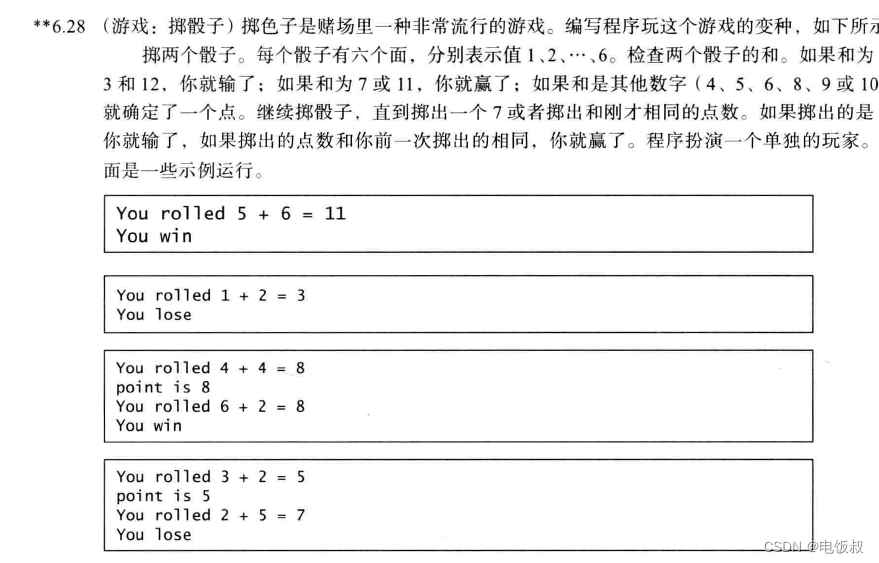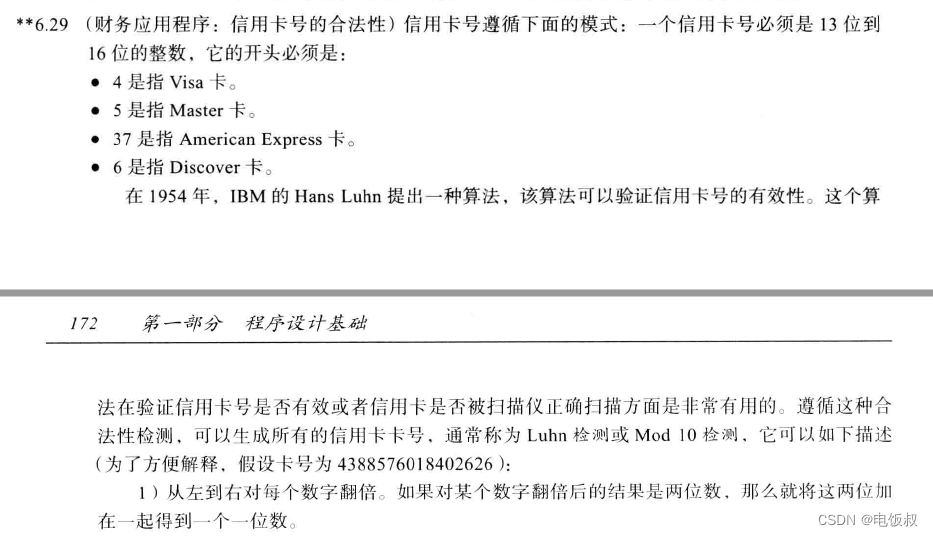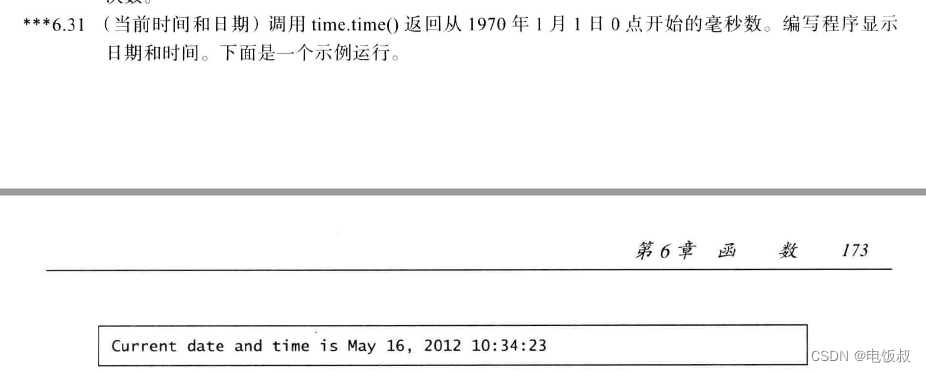
def isPrime(number):
divisor = 2
while divisor <= number / 2:
if number % divisor == 0:
return False
divisor += 1
return True
def inverse_prime(number):
if number <= 99:
b = number % 100 // 10
c = number % 100 % 10
return f"{c}{b} "
elif number >= 100:
a = number // 100
b = number % 100 // 10
c = number % 100 % 10
return f"{c}{b}{a}"
def print_prime_numbers(number_of_primes):
number_of_primes_per_line = 10
count = 0
number = 2
while count < number_of_primes:
if isPrime(number):
count += 1
a = inverse_prime(number)
print(format(a, ">4"), end=" ")
if count % number_of_primes_per_line == 0:
print()
number += 1
def main():
print("The first 100 prime number are")
print_prime_numbers(100)
main()

def isPrime(number):
divisor = 2
while divisor <= number / 2:
if number % divisor == 0:
return False
divisor += 1
return True
def mersenne_prime(number):
a = 2 ** number - 1
return format(a, "<10d")
def print_number(number):
number_of_primes_per_line = 31
count = 0
while count < number_of_primes_per_line:
count += 1
if isPrime(number):
print(f"This %2d is mersenne prime," % number, mersenne_prime(number))
number += 1
def main():
print_number(2)
main()
这个代码的编写思想,我承认很无耻。

def isPrime(number):
divisor = 2
while divisor <= number / 2:
if number % divisor == 0:
return False
divisor += 1
return True
def contrast(number):
a = number + 2
print(a)
def printPrimeNumbers(number_of_primes):
count = 0
number = 3
while count < number_of_primes:
if isPrime(number):
print(number, end=" ")
contrast(number)
count += 1
number += 1
def main():
print("The less than 1000 prime number are")
printPrimeNumbers(999)
main()

from random import *
def plus_method(num1, num2):
a = num1 + num2
return a
def main():
while True:
num1 = randint(0, 6)
num2 = randint(0, 6)
a = plus_method(num1, num2)
if a == 2 or a == 3 or a == 12:
print(f"{num1} + {num2} = {a}")
print("You lose")
break
elif a == 7 or a == 11:
print(f"{num1} + {num2} = {a}")
print("You Win")
break
else:
print(f"{num1} + {num2} = {a}")
print(f"Point is {a}")
continue
main()

def n_odd(number):
a = number // 1000
a_m = a * 2
c = number % 1000 // 10 % 10
c_m = c * 2
if a_m >= 10 and c_m <= 9:
odd_a_1 = a_m // 10
odd_a_2 = a_m % 10
odd_a_sum = odd_a_1 + odd_a_2
return odd_a_sum + c_m
elif c_m >= 10 and a_m <= 9:
odd_c_1 = c_m // 10
odd_c_2 = c_m % 10
odd_c_sum = odd_c_1 + odd_c_2
return odd_c_sum + a_m
elif a_m >= 10 and c_m >= 10:
odd_a_1 = a_m // 10
odd_a_2 = a_m % 10
odd_a_sum = odd_a_1 + odd_a_2
odd_c_1 = c_m // 10
odd_c_2 = c_m % 10
odd_c_sum = odd_c_1 + odd_c_2
return odd_c_sum + odd_a_sum
elif a_m <= 9 and c_m <= 9:
return a_m + c_m
def n_even(number):
b = number % 1000 // 100
d = number % 10
return b + d
def isValid(n1, n2, n3, n4, a, b):
c = a + b
d = c % 10
if d == 0:
print(f"This {str(n1)} {str(n2)} {str(n3)} {str(n4)} credit card is valid")
print(d)
print(c)
else:
print(f"This {str(n1)} {str(n2)} {str(n3)} {str(n4)} credit card is invalid")
print(d)
print(c)
def main():
# number1 = eval(input("Input credit card number: "))
# number2 = eval(input("Input credit card number: "))
# number3 = eval(input("Input credit card number: "))
# number4 = eval(input("Input credit card number: "))
number1 = 4388
number2 = 5760
number3 = 1840
number4 = 2626 # 2001是valid
a = n_odd(number1) + n_odd(number2) + n_odd(number3) + n_odd(number4)
b = n_even(number1) + n_even(number2) + n_even(number3) + n_even(number4)
isValid(number1, number2, number3, number4, a, b)
main()

from random import *
def plus_method(num1, num2):
a = num1 + num2
return a
def main():
count = 1
you_win = 1
you_lose = 1
with_draw = 1
while count <= 10000:
count += 1
num1 = randint(0, 6)
num2 = randint(0, 6)
a = plus_method(num1, num2)
if a == 2 or a == 3 or a == 12:
print(f"{num1} + {num2} = {a}")
print("You lose")
you_lose += 1
elif a == 7 or a == 11:
print(f"{num1} + {num2} = {a}")
print("You Win")
you_win += 1
else:
print(f"{num1} + {num2} = {a}")
print(f"Point is {a}")
with_draw += 1
print(f"You win is {you_win} and you lose is {you_lose} with draw {with_draw}")
main()

import time
def current_time():
cu_time = time.time()
return cu_time
def total_seconds():
to_seconds = int(current_time())
return to_seconds
def current_seconds():
cu_seconds = total_seconds() % 60
return cu_seconds
def total_minutes():
to_minutes = total_seconds() // 60
return to_minutes
def current_minutes():
cu_minutes = total_minutes() % 60
return cu_minutes
def current_hour():
total_hours = total_minutes() // 60
cu_hour = total_hours % 24
return cu_hour + 8
def total_day(): # compute to since 1970.01.01 second
total_hours = total_minutes() // 60 // 24
return total_hours
def run_day_in_year(): # This is the best part
year = 1970
a = total_day()
while a >= 366:
if is_leap_year(year):
a -= 366
else:
a -= 365
year += 1
return a
#
def current_year(): # I don't know how to call the two results separately,right
year = 1970
a = total_day()
while a >= 366:
if is_leap_year(year):
a -= 366
else:
a -= 365
year += 1
return year
def get_month_name(month):
if month == 1:
month_name = "January"
elif month == 2:
month_name = "February"
elif month == 3:
month_name = "March"
elif month == 4:
month_name = "April"
elif month == 5:
month_name = "May"
elif month == 6:
month_name = "June"
elif month == 7:
month_name = "July"
elif month == 8:
month_name = "August"
elif month == 9:
month_name = "September"
elif month == 10:
month_name = "October"
elif month == 11:
month_name = "November"
else:
month_name = "December"
return month_name
def is_leap_year(year):
return year % 400 == 0 or (year % 4 == 0 and year % 100 != 0)
def current_day():
a = run_day_in_year()
month_day = 1
month_text = month_day
while a >= 28:
month_day += 1
if month_day == 1 or month_day == 3 or month_day == 5 or month_day == 7 or month_day == 8 or \
month_day == 10 or month_day == 12:
a -= 31
if month_day == 4 or month_day == 6 or month_day == 9 or month_day == 11:
a -= 30
if month_day == 2:
if is_leap_year(current_year()):
a -= 29
else:
a -= 28
print(f"current day is {a + 1} and {get_month_name(month_day)}")
def main():
print("This year is", current_year())
current_day()
print("Current time is", current_hour(), ":",
current_minutes(), ":", current_seconds(), "GMT")
main()

def month_list(month_data):
month_dist = {1: "一月", 2: "二月", 3: "三月", 4: "四月", 5: "五月", 6: "六月", 7: "七月", 8: "八月", 9: "九月",
10: "十月", 11: "十一月", 12: "十二月"}
return month_dist[month_data]
def week_list(w_day):
week_dist = {0: "星期六", 1: "星期日", 2: "星期一", 3: "星期二", 4: "星期三", 5: "星期四", 6: "星期五"}
return week_dist[w_day]
def count_day(year_data, month_num, input_data):
year_data_type = year_data
after_years = year_data - 1
for i in range(month_num, 13):
month_day = i
if i <= 2:
i += 12
year_data = after_years
elif i >= 3:
i = i
year_data = year_data_type
# print(i,year_data)
j = year_data // 100
k = year_data % 100
m1 = (26 * (i + 1)) // 10
w_day = (input_data + m1 + k + (k // 4) + (j // 4) + (5 * j)) % 7
print(month_list(month_day), input_data, year_data_type, "is", week_list(w_day))
def main():
year_data = eval(input("Enter year number is: "))
month_num = eval(input("Enter month number is: "))
input_data = eval(input("Enter day number is: "))
count_day(year_data, month_num, input_data)
main()
版权声明:本文为m0_37228426原创文章,遵循 CC 4.0 BY-SA 版权协议,转载请附上原文出处链接和本声明。